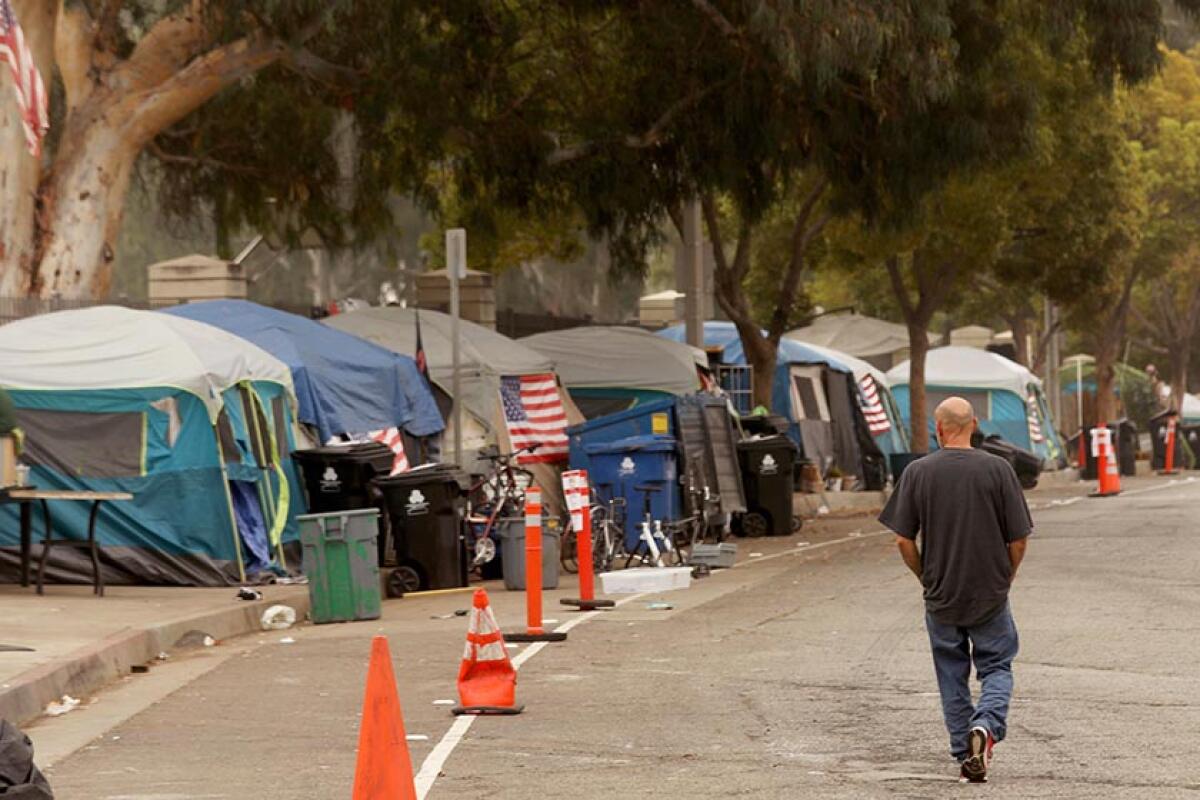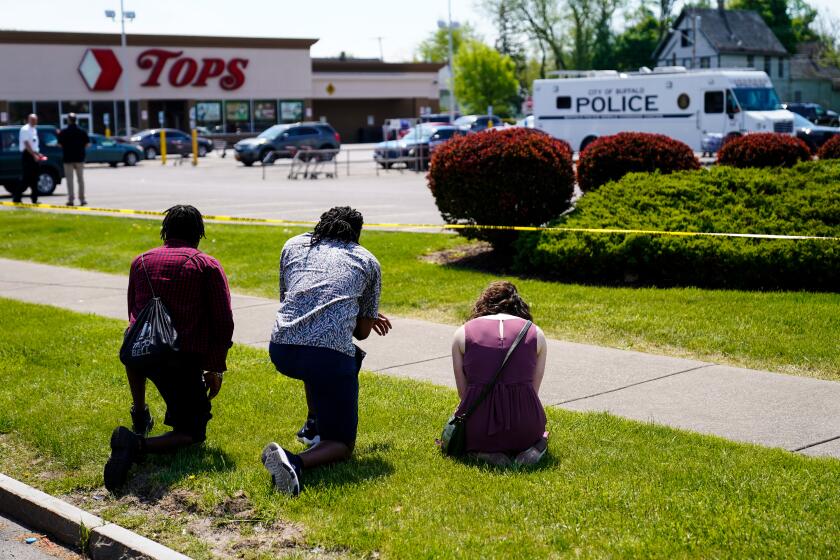California should back a program to prevent homelessness, not just react to it

- Share via
Conservative pundits and politicians love California’s homelessness crisis.
For many of them, the sight of people living on the streets doesn’t inspire an instinct to help. It inspires a twisted glee. They see an opportunity to frame progressive policies as disastrous on Fox News, Newsmax and elsewhere.
One can only imagine how these ghouls feel about the rising percentage of Latinx people among Californians without a roof over their heads, considering the Trump-inspired surge in sadism toward Latinos.
Opinion Columnist
Jean Guerrero
Jean Guerrero is the author, most recently, of “Hatemonger: Stephen Miller, Donald Trump and the White Nationalist Agenda.”
Even before the pandemic disproportionately devastated Latinos, that group was experiencing one of the most drastic increases in homelessness amid rising housing costs and stagnant wages. The causes were not progressive policies, as right-wing commentators claim, but decades of institutional racism and economic inequality. Latinas — paid 49 cents for each dollar white men receive — have it the worst, especially in Spanish-speaking households, which suffer the highest housing-cost burden of all.
Fortunately, Gov. Gavin Newsom can lessen their burden. It’s the right thing to do. It’s also smart politics, after Latinas played an important role in helping him defeat last year’s gubernatorial recall effort.
The governor should champion the House California Challenge Program, or AB-2817, which would provide $5 billion over five years in rental subsidies for people who are homeless or on the brink of it. Advocates believe it could house 50,000 people in the first year alone. It would be transformational for many people, including countless Latinas and other women of color.
Of course, Republicans would attack the move as more of the same: “enabling” people to be lazy and indulgent of vices. But in reality, it could be lifesaving for Latina breadwinners such as Maria Cibrian.
A 64-year-old Californian from Mexico who works as a full-time caregiver for her disabled daughter, she earns about $1,000 a month — barely enough to pay rent on the one-bedroom apartment that the two share.
For other expenses, she has a side hustle: selling homemade desserts, such as gelatina and pasteles. She worries whenever she sees the news reports about a rise in the number of homeless people. “I think to myself that I might someday be in their shoes,” she told me.
AB-2817, introduced by Assembly Majority Leader Eloise Gómez Reyes and Assemblywoman Luz Rivas, caps rental assistance at “reasonable rent,” or twice the fair market rent. It would also provide incentives for landlords to rent to prospective tenants in the program. Currently, only 1 in 5 people eligible for federal housing choice vouchers actually receive them, and those who do are often rejected by landlords.
Although government programs tend to focus on the chronically homeless, about two-thirds of California’s homeless population is newly homeless. Families are the fastest-growing group.
The Buffalo gunman had ‘14’ written on his rifle. I know that white-supremacist slogan because of demonstrations in my town of Thousand Oaks.
Gary Painter, director of USC’s Sol Price Center for Social Innovation, said it’s critical to prevent youths from becoming homeless in the first place. “Once they hit the streets, they’re at really high risk of developing substance abuse disorders and experiencing mental health conditions,” he told me.
Federal housing vouchers correlate with higher wages and more stable employment long-term, Painter said. Children in families that received them were less likely to be placed in foster care and to have behavioral and sleep problems than members of a control group. Housing subsidies may also prevent hospital stays and other costly public services.
AB-2817 aims to allow cities, counties, nonprofits and other providers to connect homeless people to permanent housing quickly and flexibly. Assembly Majority Leader Reyes is prioritizing the bill and budget request.
In L.A. County, Latinos are thought to make up 35% of the homeless population. But that’s most likely an undercount, because many skip traditional homeless shelters and encampments and instead double up in overcrowded housing with other families.
They’re the least likely of all groups to seek homeless services because of language barriers and fears about being deemed a “public charge,” which could hurt the immigration cases of those who lack citizenship.
The services envisioned in AB-2817 could be underused because of some of those same engagement challenges. And the program might not address what Marques Vestal, a UCLA assistant professor of urban planning, sees as a core problem: lack of political power among homeless individuals. Vestal worries that service providers might move them away from social support. “They chose the places where they want to live, even if they’re outdoors, because they have communities that are holding them together,” he said.
A ‘lone wolf’ killer? That might be a comforting thought, if only it were true.
He favors projects like the L.A. Community Action Network’s Ecohood, a grassroots project that empowers community members in the design of micro homes on empty or underused government property.
No single approach is going to solve this complex problem. But the rental assistance bill, if carefully implemented, would be a lifeline for people like Z., a 41-year-old Californian from Nicaragua who requested not to use her full name because she feared losing custody of her daughters.
A single mother, she lost the house she was renting during the pandemic because her hours as a janitor were cut. “If there was money for rent, there was no money for food,” she told me. “If there was money for food, there was no money for rent.” She didn’t know she qualified for temporary emergency rental assistance during the pandemic. She found a cramped room in a house with strangers, but she’s still struggling. “I don’t have anything in the refrigerator to feed my girls,” she texted me this week.
The state has invested billions in the creation and conversion of new affordable housing units. But without more rental subsidies for people to move into those spaces as well as into existing market-rate units, hardworking moms like Z. will continue to end up on the streets — where right-wing media vultures can revel in their suffering.
More to Read
A cure for the common opinion
Get thought-provoking perspectives with our weekly newsletter.
You may occasionally receive promotional content from the Los Angeles Times.













